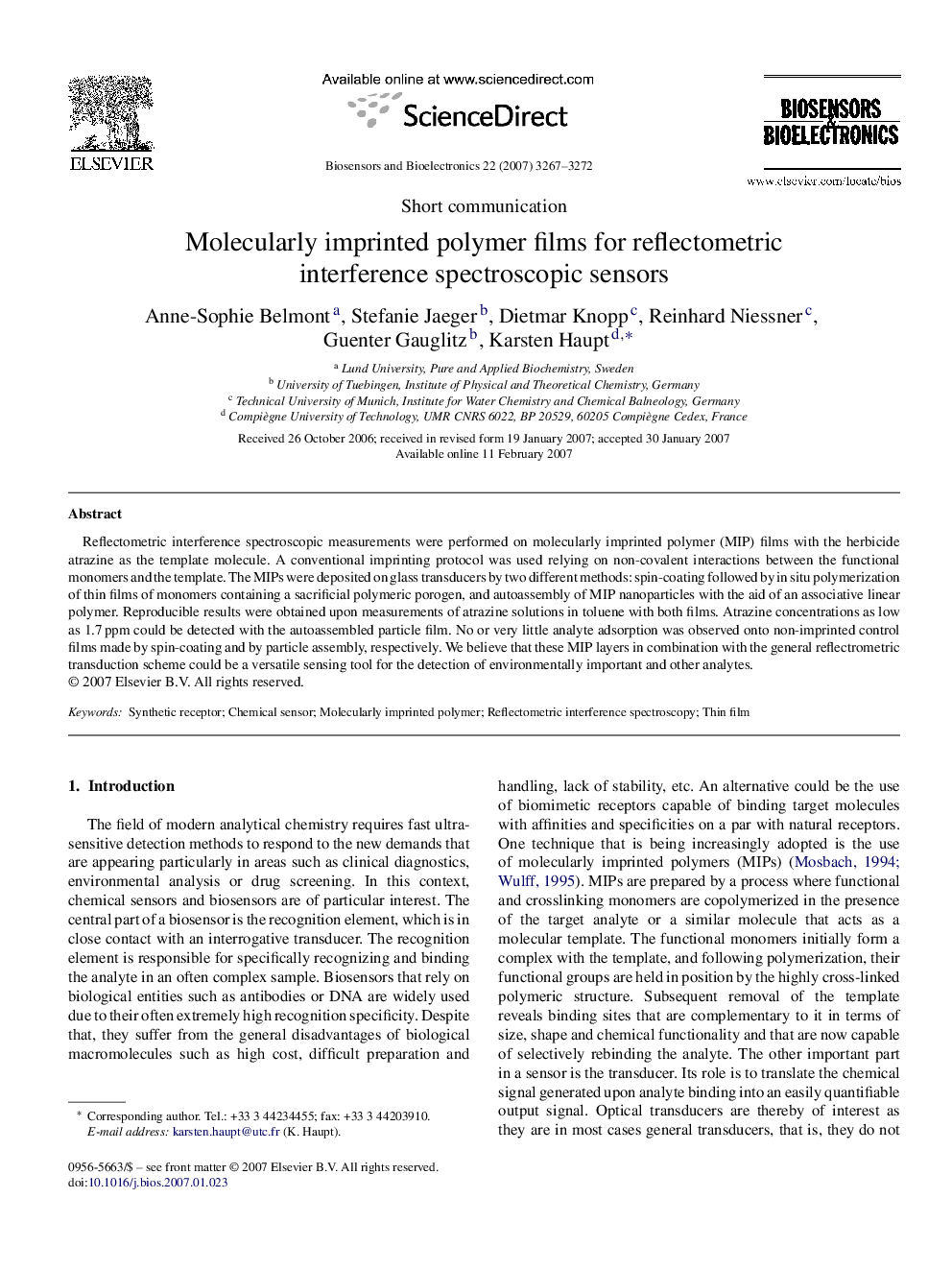| Article ID | Journal | Published Year | Pages | File Type |
|---|---|---|---|---|
| 869465 | Biosensors and Bioelectronics | 2007 | 6 Pages |
Reflectometric interference spectroscopic measurements were performed on molecularly imprinted polymer (MIP) films with the herbicide atrazine as the template molecule. A conventional imprinting protocol was used relying on non-covalent interactions between the functional monomers and the template. The MIPs were deposited on glass transducers by two different methods: spin-coating followed by in situ polymerization of thin films of monomers containing a sacrificial polymeric porogen, and autoassembly of MIP nanoparticles with the aid of an associative linear polymer. Reproducible results were obtained upon measurements of atrazine solutions in toluene with both films. Atrazine concentrations as low as 1.7 ppm could be detected with the autoassembled particle film. No or very little analyte adsorption was observed onto non-imprinted control films made by spin-coating and by particle assembly, respectively. We believe that these MIP layers in combination with the general reflectrometric transduction scheme could be a versatile sensing tool for the detection of environmentally important and other analytes.
